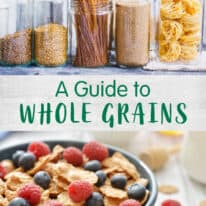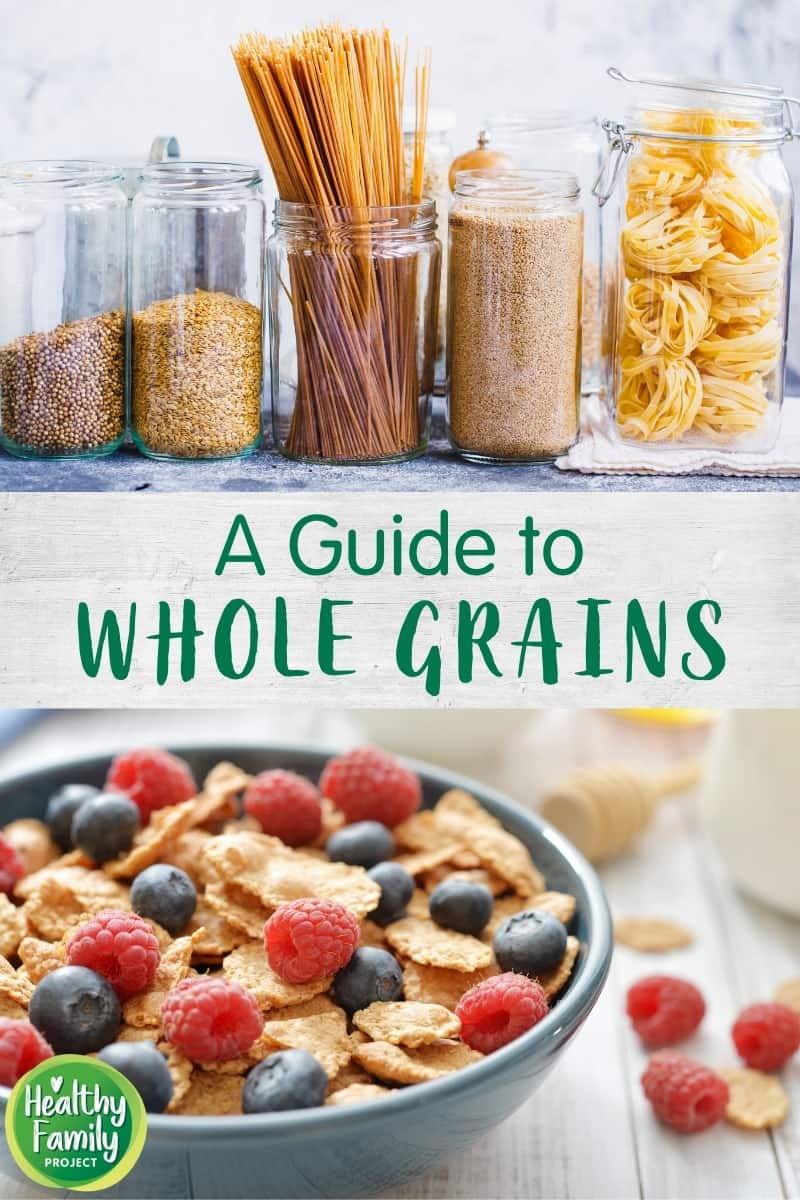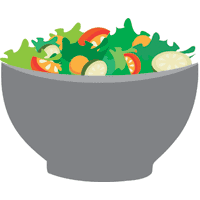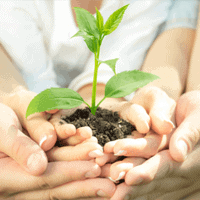A Guide to Whole Grains
If you’ve heard you should be eating whole grains but are a little fuzzy on exactly what that means — or if (gasp!) you think you need to cut out ALL grains to be healthy — registered dietitian Sally put together this quick guide is for you.
We talk a lot about the importance of whole grains in a healthy diet, but if you’re not totally sure what a whole grain is and what to look for when grocery shopping, it can be hard to make sure your family is getting enough in their diet.
Here’s what you need to know:
What makes a grain “whole”?
Whole grains are just like they sound: the grain in its whole form. That means all parts of the grain — the bran (outer coating) plus the endosperm and germ on the inside — stay intact during processing. Refined grains have been stripped of some of those parts during processing.
Why are whole grains special?
Because whole grains have all their natural components, they’re higher in fiber, protein, and certain vitamins like vitamin E and B vitamins than refined grains. In fact, refining a grain removes about a quarter of its protein and up to two-thirds of its natural nutrients, according to the Whole Grains Council.
There’s also a slew of research on what whole grains can do for health, like a lower risk for diseases like heart disease, cancer, and Type 2 diabetes. A diet rich in whole grains is also associated with a healthy body weight.
How much should kids get?
Ideally, at least half of the grains kids eat every day should be whole. So it’s okay if your kids prefer white bread on her PB&J — just serve brown rice for dinner or put some whole wheat crackers on a snack plate for them.
Which grains are whole?
Here are some whole grains you can use at home when cooking and baking:
- Brown Rice: It’s got double the fiber of white rice. Try it in these Savory Chicken & Rice Muffins.
- Bulgur: These are kernels of wheat that have been cooked, dried, and broken into small pieces. Swap cooked barley for other grains in chili and soups.
- Farro: This is an ancient grain that’s filling and high in protein. Swap it for rice in bowls or as a side dish.
- Millet: Sure, this small, round yellow grain is an ingredient in bird seed, but it’s also a healthy ingredient for people! Add uncooked millet to granola and muffin recipes.
- Oats: All oats — quick, old-fashioned, or steel-cut — are whole. These Coco Banana Overnight Oats are a sweet, filling way to serve them.
- Whole corn: Yes, popcorn is a whole grain snack!
- Whole Wheat: Swapping in whole wheat flour for white gives everything a fiber boost. Make a batch of these Whole Wheat Banana Crunch Pancakes
- Whole Wheat Couscous: Read labels to find the whole wheat version, which is a good source of fiber and iron. Here’s a recipe to try with it: Middle Eastern Broccoli & Dried Apricot Couscous Salad
In packaged foods, look for the word “whole” on the ingredient list when reading labels. If it’s bread or cereal, a “whole” grain should be the first ingredient. Some products may be labeled “made with whole grains” but that may not be the primary ingredient. And be aware that “wheat flour” is another term for white, refined flour, and doesn’t mean it’s whole wheat flour.
What if my kid doesn’t like them?
Some kids prefer the lighter color and milder flavor of white flour, white rice, and other refined grains. That’s okay! You can serve a mix of both. Being consistent about serving whole grains and trying them in different ways can help too.
Here are some ideas:
- Make a batch of “zebra pasta” with half white pasta with half whole wheat.
- Make a “checkerboard sandwich” with one slice of white, one whole wheat. Cut into squares and flip over alternating squares to make a little checkerboard.
- Look for whole grain oat bread, which has a lighter color and milder flavor than whole wheat but is still a whole grain.
- For baking, swap one-third of the white flour for whole wheat flour or white whole wheat flour (it’s made with a different kind of wheat that’s lighter and milder). Whole wheat pastry flour is another great substitute when baking.














